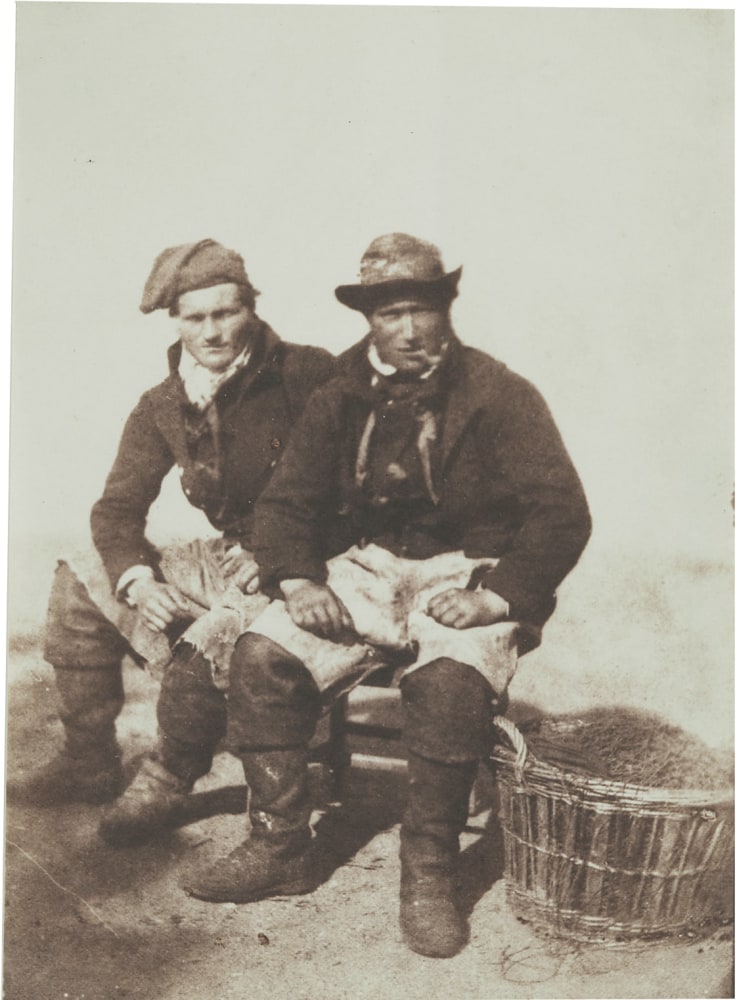
David Octavius Hill & Robert Adamson (Scottish, 1802-1870 & 1821-1848)
David Young and another Newhaven fisherman, 1843 or June 1845
Salt print from a calotype negative
15.5 x 11.4 cm on 36.6 x 29.5 cm paper
The plain white background is unusual in Hill & Adamson photographs. Almost always they modulated their backgrounds with props, room settings, or tones caused by out of focus objects. In this photograph, with the fishermen posed against the sea, any detail behind them was simply washed out by the sun.
Inquire
David Octavius Hill & Robert Adamson (Scottish, 1802-1870 & 1821-1848)
Jeanie Wilson and Annie Linton, Newhaven, "They were twa bonnie lasses", circa 1845
Salt print from a calotype negative
19.0 x 13.6 cm mounted on 37.4 x 26.2 cm grey paper
"58" noted in pencil on mount verso
Among the earliest photographers to exploit both the artistic and documentary potential of the portrait, D. O. Hill & Robert Adamson made a survey of contemporary life in the picturesque fishing village of Newhaven, just outside Edinburgh. In Jeanie Wilson and Annie Linton, an 1845 salt print from a calotype negative in the series, the photographers saw that the true character and beauty of the fishwives was intimately connected to their way of life and the precarious nature of their ties to the hard-working fishermen, often absent at sea. The traditional dress of the fisherwomen lends itself particularly well to the calotype medium. Hill & Adamson’s skillful deployment of light and shade and their positioning of the sitters is a fine example of early portraiture and a sought after example of their work.
Inquire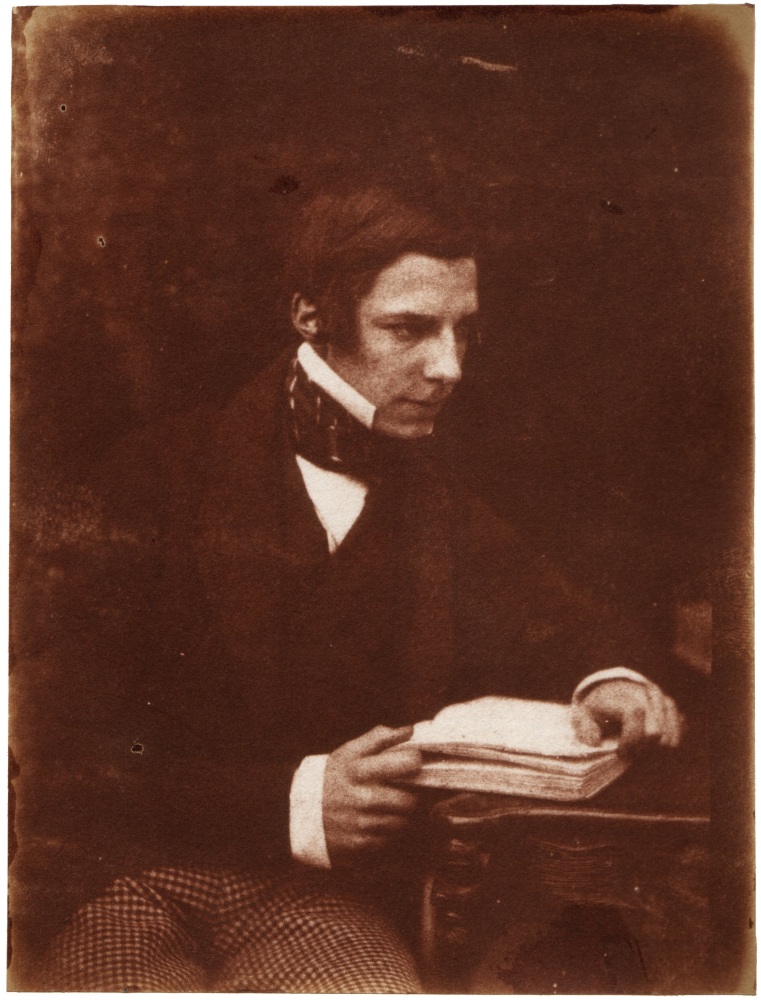
David Octavius Hill & Robert Adamson (Scottish, 1802-1870 & 1821-1848)
John Mackintosh "The Earnest Student", circa 1843-1847
Salt print from a calotype negative
16.5 x 12.6 cm mounted on 37.6 x 26.6 cm paper
"John Mackintosh (Geddes) The Earnest Student" inscribed in pencil, with Royal Scottish Academy monogram, on mount
This portrait of the introspective scholar shows an unusually strong depth of tone for a salt print.
Inquire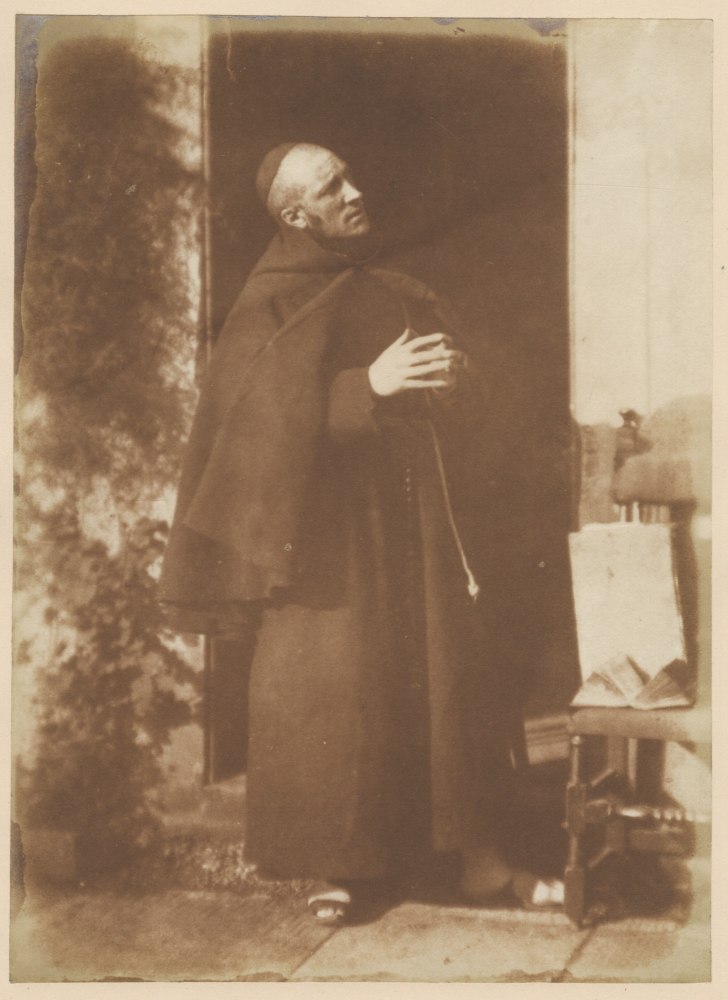
David Octavius Hill & Robert Adamson (Scottish, 1802-1870 & 1821-1848)
William Leighton Leitch, circa 1845
Salt print from a calotype negative
19.7 x 14.3 cm mounted on 37.6 x 27.1 cm paper
William Leighton Leitch (1804-1883) was a landscape painter, watercolourist, and drawing master to Queen Victoria.
Inquire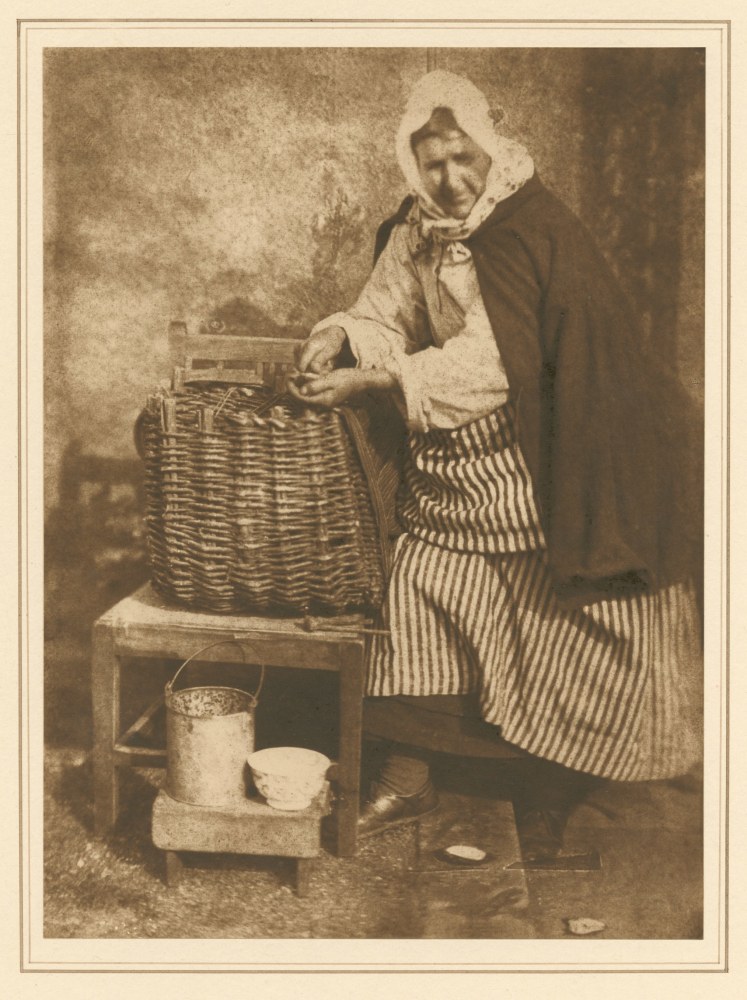
David Octavius Hill & Robert Adamson (Scottish, 1802-1870 & 1821-1848)
Mrs. Barbara (Johnstone) Flucker, Newhaven
Carbon print by Jessie Bertram, 1916, derived from the original calotype negative by Hill and Adamson, 1843-1847
20.4 x 15.2 cm mounted on 38.3 x 26.5 cm paper

David Octavius Hill & Robert Adamson (Scottish, 1802-1870 & 1821-1848)
The Bird Cage (the Misses Watson), 1916
Carbon print by Jessie Bertram derived from the original calotype negative by Hill & Adamson, 1843-1847
20.2 x 15.0 cm mounted on 38.3 x 26.5 cm paper, ruled in gilt
Hill & Adamson's pioneering body of work was championed by the efforts of photographers and publishers such as Thomas and James Craig Annan, Andrew Elliot, and Alfred Stieglitz who reproduced The Bird Cage in Camera Work 28, 1909. The Edinburgh photographer Jessie Bertram (1881-1954) reprinted selections from their works using the durable carbon process, working from the original calotype negative, producing beautiful and permanent prints.
Inquire
David Octavius Hill & Robert Adamson (Scottish, 1802-1870 & 1821-1848)
David Young and another Newhaven fisherman, 1843 or June 1845
Salt print from a calotype negative
15.5 x 11.4 cm on 36.6 x 29.5 cm paper
The plain white background is unusual in Hill & Adamson photographs. Almost always they modulated their backgrounds with props, room settings, or tones caused by out of focus objects. In this photograph, with the fishermen posed against the sea, any detail behind them was simply washed out by the sun.
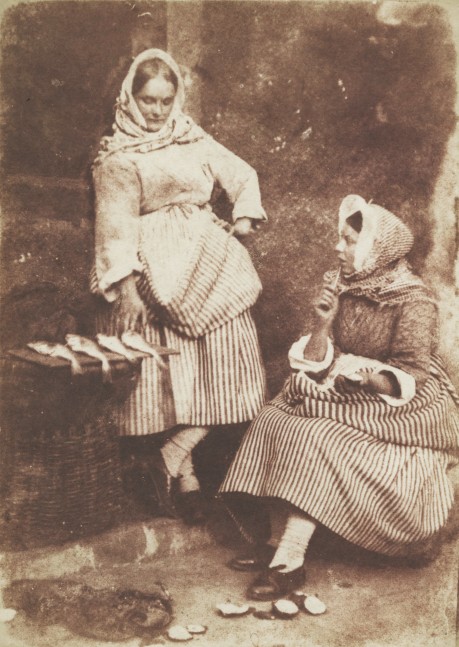
David Octavius Hill & Robert Adamson (Scottish, 1802-1870 & 1821-1848)
Jeanie Wilson and Annie Linton, Newhaven, "They were twa bonnie lasses", circa 1845
Salt print from a calotype negative
19.0 x 13.6 cm mounted on 37.4 x 26.2 cm grey paper
"58" noted in pencil on mount verso
Among the earliest photographers to exploit both the artistic and documentary potential of the portrait, D. O. Hill & Robert Adamson made a survey of contemporary life in the picturesque fishing village of Newhaven, just outside Edinburgh. In Jeanie Wilson and Annie Linton, an 1845 salt print from a calotype negative in the series, the photographers saw that the true character and beauty of the fishwives was intimately connected to their way of life and the precarious nature of their ties to the hard-working fishermen, often absent at sea. The traditional dress of the fisherwomen lends itself particularly well to the calotype medium. Hill & Adamson’s skillful deployment of light and shade and their positioning of the sitters is a fine example of early portraiture and a sought after example of their work.

David Octavius Hill & Robert Adamson (Scottish, 1802-1870 & 1821-1848)
John Mackintosh "The Earnest Student", circa 1843-1847
Salt print from a calotype negative
16.5 x 12.6 cm mounted on 37.6 x 26.6 cm paper
"John Mackintosh (Geddes) The Earnest Student" inscribed in pencil, with Royal Scottish Academy monogram, on mount
This portrait of the introspective scholar shows an unusually strong depth of tone for a salt print.

David Octavius Hill & Robert Adamson (Scottish, 1802-1870 & 1821-1848)
William Leighton Leitch, circa 1845
Salt print from a calotype negative
19.7 x 14.3 cm mounted on 37.6 x 27.1 cm paper
William Leighton Leitch (1804-1883) was a landscape painter, watercolourist, and drawing master to Queen Victoria.

David Octavius Hill & Robert Adamson (Scottish, 1802-1870 & 1821-1848)
Mrs. Barbara (Johnstone) Flucker, Newhaven
Carbon print by Jessie Bertram, 1916, derived from the original calotype negative by Hill and Adamson, 1843-1847
20.4 x 15.2 cm mounted on 38.3 x 26.5 cm paper
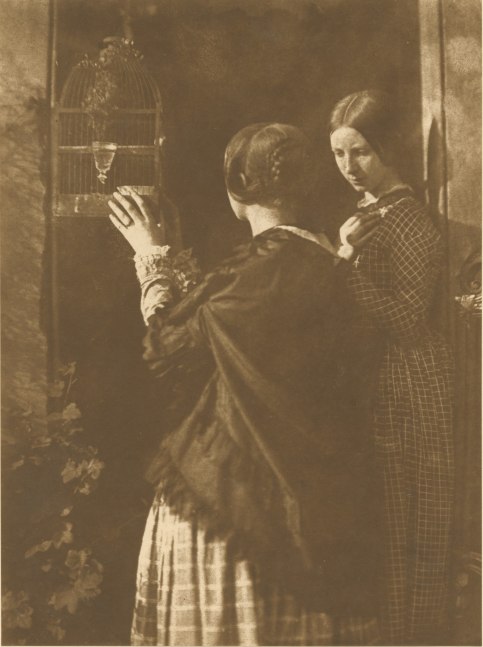
David Octavius Hill & Robert Adamson (Scottish, 1802-1870 & 1821-1848)
The Bird Cage (the Misses Watson), 1916
Carbon print by Jessie Bertram derived from the original calotype negative by Hill & Adamson, 1843-1847
20.2 x 15.0 cm mounted on 38.3 x 26.5 cm paper, ruled in gilt
Hill & Adamson's pioneering body of work was championed by the efforts of photographers and publishers such as Thomas and James Craig Annan, Andrew Elliot, and Alfred Stieglitz who reproduced The Bird Cage in Camera Work 28, 1909. The Edinburgh photographer Jessie Bertram (1881-1954) reprinted selections from their works using the durable carbon process, working from the original calotype negative, producing beautiful and permanent prints.
